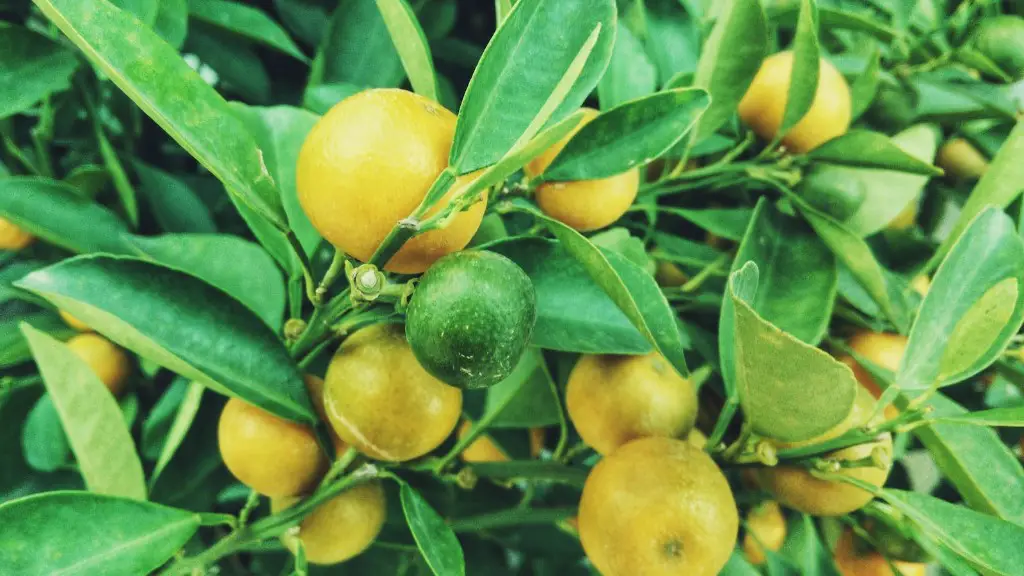What is an Avocado Tree?
Avocado trees, scientifically known as Persea americana, are a type of flowering evergreen tree that is native to South Central Mexico and Central America. The trees grow up to 65 feet tall and are known for their production of the green, pear-shaped fruits commonly known as avocados. In addition, avocados have high amounts of antioxidant and have a mild, buttery taste.
How Big Can Avocado Trees Grow?
Avocado trees can grow to different heights depending on the species and where they are planted. In tropical areas, such as countries surrounding the equator, an avocado tree can grow up to 65 feet tall. The trees can also grow exceptionally well in warmer climates, such as the Caribbean, Mexico, and South America, where temperatures tend to be more consistent throughout the year.
In regions with more temperate climates, however, such as in the United States, avocado trees tend to grow to shorter heights of 15 – 30 feet. This is because temperatures are low during winter months, resulting in slower growth due to the tree’s need for a certain amount of heat for substantial growth.
Factors that Affect an Avocado Tree’s Growth
Besides climate, there are other factors that can influence an avocado tree’s growth. One of the most important elements is soil pH levels, as avocado trees require slightly acidic levels for optimal growth and fruit production. The ideal pH level for an avocado tree is 6.0 to 7.0. Improper soil pH levels can result in yellowing of the leaves, stunted or poor fruit production, and even slow or stagnant growth of the tree.
Water is another factor that can affect an avocado tree’s size and health. Avocado trees prefer well-drained soils and should not be planted where water often floods the area. The tree needs regular moisture but needs it to drain quickly to prevent nutrient deficiencies and root rot.
Age and Sunlight
The age of the avocado tree is also an important factor. Trees take time to reach maximum growth and can take up to seven years before they start to produce fruit. This is why it is important to prune and fertilize the tree regularly when it is still young.
The tree also needs a minimum of six hours of direct sunlight each day. This helps the tree develop strong trunks and broader canopies, which are essential for providing shade, harvesting larger fruits, and protecting the tree from extreme weather conditions.
Proper Pruning
Proper pruning is essential for helping an avocado tree grow and remain healthy. If the tree is not pruned correctly, it can lose its shape and balance and lead to improper growth and dieback. Pruning should be done in the early spring to encourage strong shoots, blossoms, and fruits later in the year.
The pruning needs to be done in a way that will help the tree maintain its branch structure, open up the canopy to support better sunlight exposure, and reduce the workload of the roots. If the tree is pruned incorrectly, it will take would take longer to reach its full size and may remain stunted and unable to produce a good yield.
Fertilization
Fertilization is also necessary for proper growth of an avocado tree. The tree should be fertilized at least once a month, preferably with a nitrogen fertilizer. This will help keep the tree healthy and promote strong root and branch growth as well as higher yields of fruit in the long run.
Pest Control and Disease Management
Avocado trees can also be affected by a variety of pests and diseases, so it is essential to take preventative measures to protect the tree. Common avocado pests include the avocado lace bug and the avocado thrips, which can damage the fruit or cause discoloration of the leaves and branches. To prevent pests from attacking the tree, regular pruning and fertilization are essential, as well as regularly checking for signs of pest damage.
In addition to pests, avocado trees are also vulnerable to fungal diseases, such as stem cankers, blight, and root rot. To reduce the risk of these diseases, it is important to ensure that the tree is not being overwatered and that the soil pH levels are correct.
Conclusion
Avocado trees can grow to a variety of heights depending on the species and where they are planted. To ensure that the tree grows to its full size, it is important to take several preventative measures, such as properly fertilizing and pruning the tree, managing pests and diseases, and providing the tree with the proper soil pH levels and sunlight. With the proper care, an avocado tree can grown to its maximum height and produce delicious and nutritious fruits.

